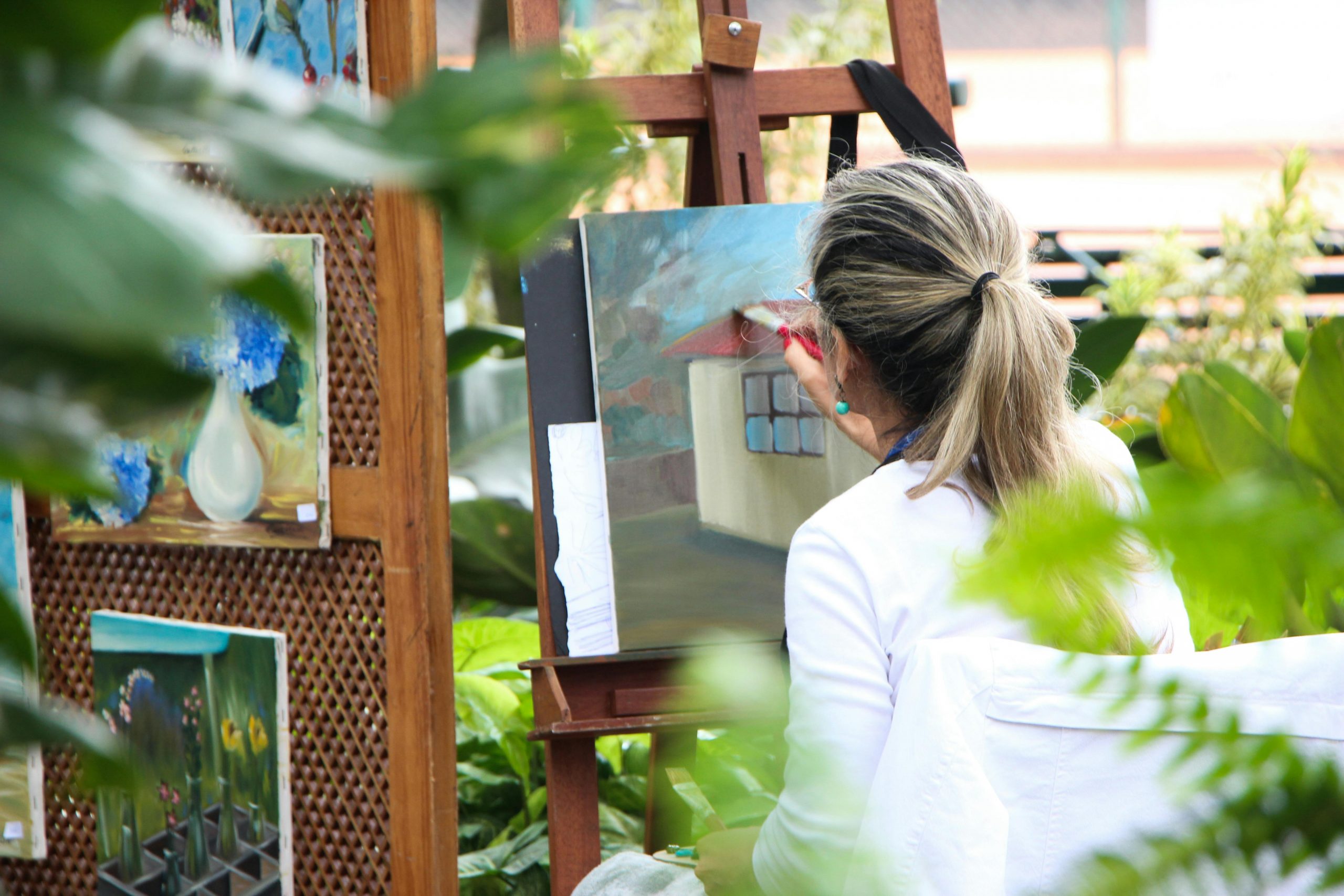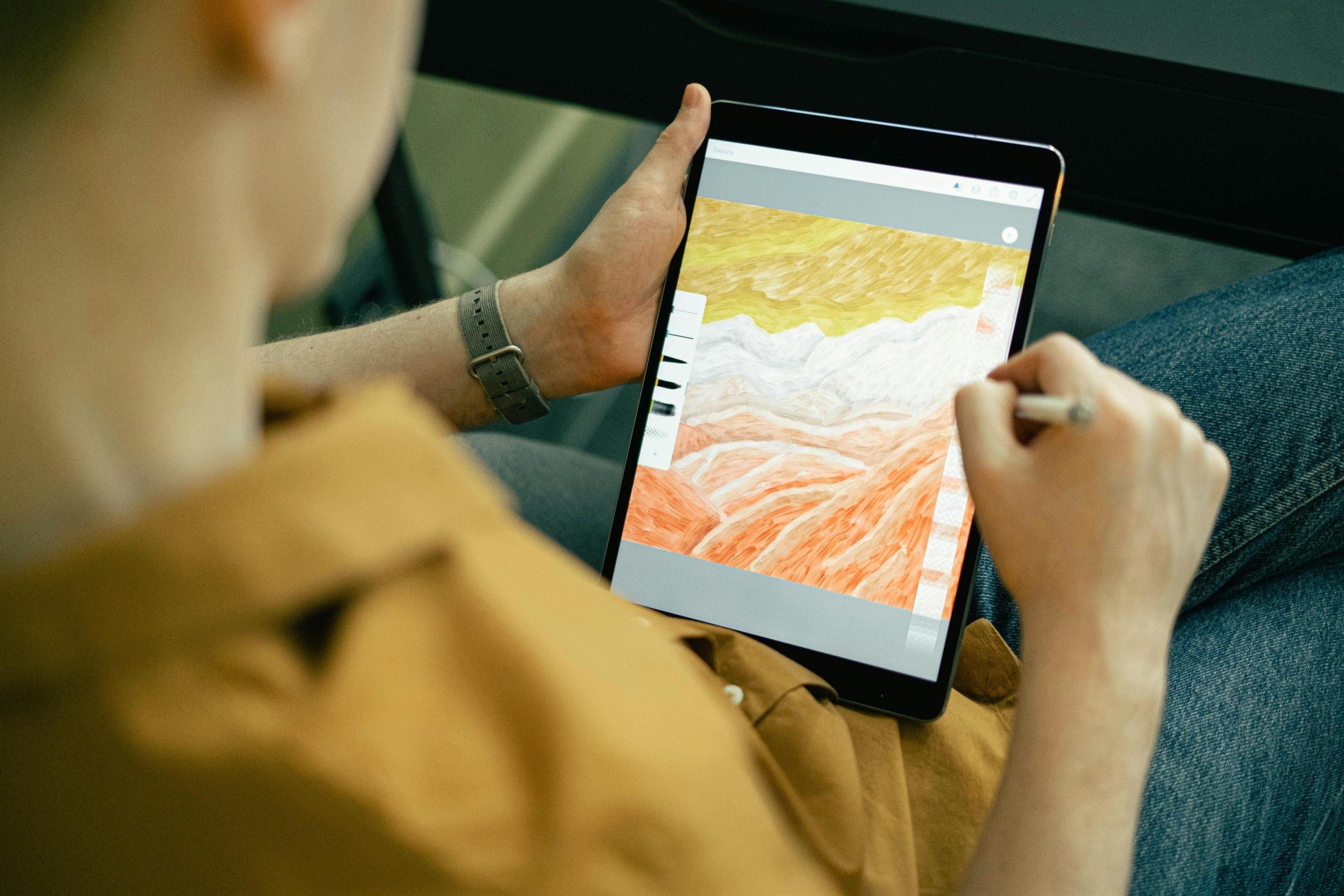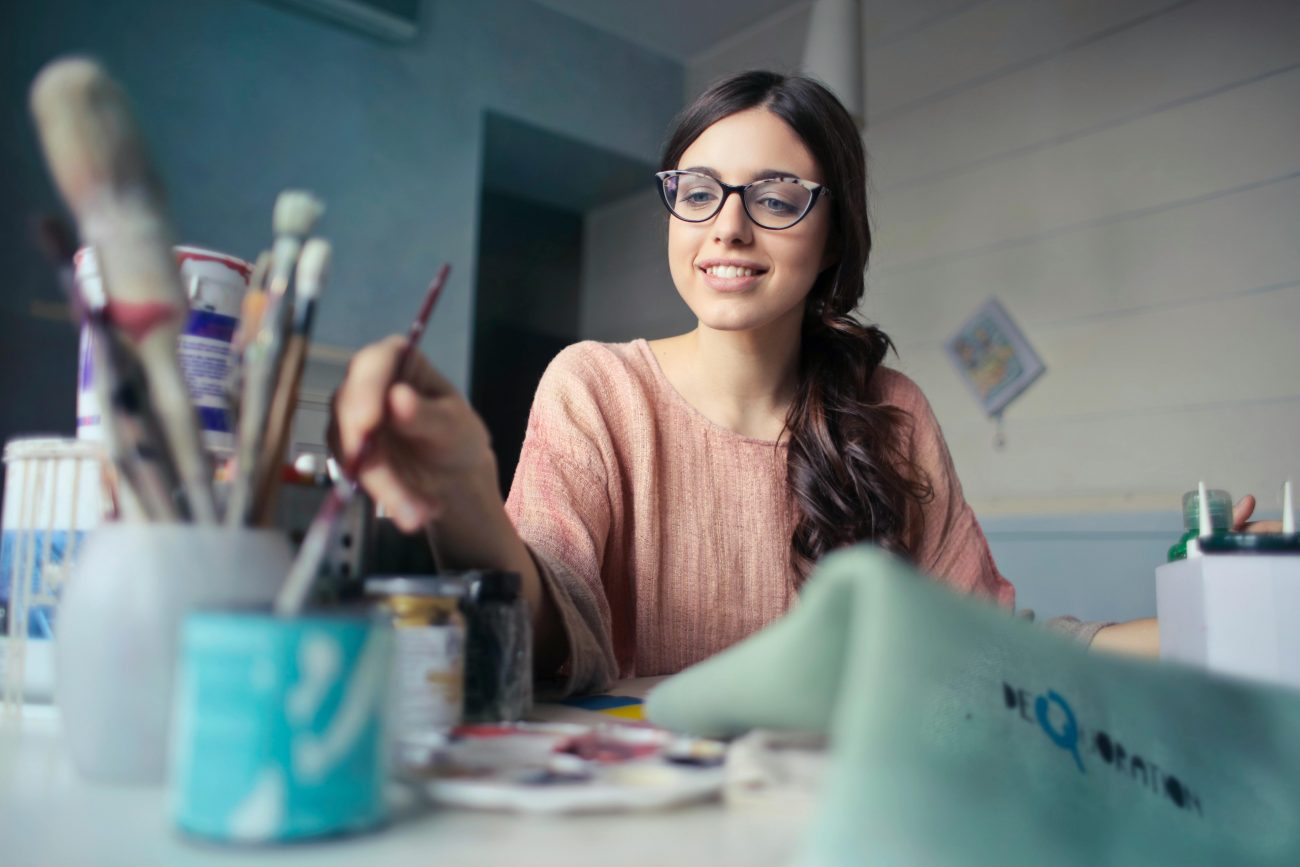
Art has evolved dramatically with technology. Today, artists can choose between digital art—created using computers and tablets—and traditional art, made with paint, pencils, or clay. Both forms require creativity and skill, but they differ in technique, tools, and experience.
In this guide, we’ll explore the core differences, advantages, and challenges of each art form to help you understand which may suit your artistic style best.
What Is Traditional Art?

Traditional art refers to artwork created using physical materials—paint, charcoal, ink, clay, or pastels—on a tangible surface like canvas or paper.
Common Traditional Art Forms
- Painting: Using oil, acrylic, or watercolor paints on canvas or board.
- Drawing: Creating images with graphite, colored pencils, or ink.
- Sculpture: Shaping clay, metal, or stone into 3D art forms.
- Printmaking: Producing multiple copies of an image through woodcuts or etching.
Traditional art connects the artist directly with their medium. Every brushstroke or pencil mark becomes a permanent part of the final piece, making each creation one-of-a-kind.
What Is Digital Art?
Digital art uses software and digital tools like styluses, tablets, and computers to create visual artwork. Instead of paint and canvas, artists use programs such as Adobe Photoshop, Procreate, or Illustrator.
It includes many styles and techniques, such as digital painting, 3D modeling, vector art, and animation.
To better understand how artists work digitally, you can also explore the topic what is digital illustration, which explains the process of creating digital artwork in detail.
The Core Differences Between Digital & Traditional Art
While both forms rely on creativity, they differ in materials, technique, and flexibility.
- Tools and Materials
- Traditional: Brushes, canvases, pencils, paper, and paints.
- Digital: Stylus, tablet, computer, and software.
In traditional art, you physically mix colors and apply them to a surface. In digital art, you mix colors virtually and can undo mistakes instantly.
- Texture and Feel
Traditional art offers a tactile experience—you can feel the texture of paint or paper. Digital art, however, relies on simulated textures through software.
Many artists prefer traditional art for its organic feel, while others love digital art for its precision and convenience.
- Editing & Flexibility
Digital art allows you to:
- Undo mistakes with a single click.
- Adjust color, size, or layout easily.
- Duplicate layers without starting over.
Traditional art, on the other hand, requires repainting or recreating an entire section if a mistake happens.
- Cost and Accessibility
Traditional materials can be expensive over time—paint, brushes, and canvases add up. Digital tools have higher initial costs (like tablets and software) but offer long-term savings since supplies don’t run out.
- Storage & Sharing
- Traditional art: Needs physical space and careful preservation.
- Digital art: Can be stored on drives or cloud services and shared instantly online.
Digital formats make it easier for artists to collaborate or sell art globally.
Advantages of Traditional Art
Despite the rise of digital tools, traditional art remains timeless.
Benefits Include:
- Authentic Texture: The physical medium adds depth and uniqueness.
- Sensory Connection: The tactile feel of materials can enhance creativity.
- Historical Value: Traditional pieces often hold sentimental and monetary value.
- No Tech Barriers: No need for power, software, or updates—just creativity and tools.
Traditional art also encourages patience, mindfulness, and emotional engagement in every brushstroke.
Advantages of Digital Art

Digital art offers unmatched flexibility and efficiency for modern creators.
Key Benefits:
- Easy Corrections: Undo mistakes instantly without damaging the work.
- Endless Experimentation: Try different colors, brushes, and styles freely.
- Cost-Effective Over Time: No need for physical materials after setup.
- Eco-Friendly: Reduces waste from paints and paper.
- Perfect for Sharing: Ideal for online portfolios, social media, and digital sales.
Digital tools also open doors to animation, 3D design, and illustration, making it essential for commercial and entertainment industries.
Disadvantages of Traditional Art
While it’s deeply rewarding, traditional art also has limitations.
Challenges Include:
- Limited Editing: Mistakes are harder to fix.
- High Supply Costs: Art materials must be replaced regularly.
- Storage Problems: Paintings and sculptures need physical space.
- Fragility: Artwork can fade, tear, or degrade over time.
Despite these challenges, many artists find traditional art worth it for its authenticity and tactile joy.
Disadvantages of Digital Art
Digital art, while powerful, comes with its own drawbacks.
Common Issues:
- Less Tangible: No physical piece unless printed.
- Tech Dependence: Relies on electricity and software.
- Learning Curve: Software tools can be overwhelming for beginners.
- File Risks: Art can be lost through data corruption or hardware failure.
Some artists also feel digital art lacks the “soul” of handmade creations—though others argue creativity shines through any medium.
Combining Digital & Traditional Techniques
Many modern artists use a hybrid approach, blending both methods.
Popular Hybrid Techniques:
- Sketching ideas on paper, then scanning and coloring digitally.
- Creating textures traditionally and layering them in digital programs.
- Printing digital art onto canvas for a painted-over finish.
This combination allows artists to enjoy the best of both worlds—the warmth of traditional art with the flexibility of digital tools.
Which One Is Right for You?
Choosing between digital and traditional art depends on your goals, lifestyle, and creative preferences.
Ask yourself:
- Do you prefer hands-on creativity, or do you enjoy technology?
- Is your goal to create for print, digital media, or personal expression?
- How much time and space do you have for materials or tools?
If you enjoy tactile processes, go traditional. If you value flexibility and speed, go digital. Many artists ultimately blend both as their style evolves.
The Role of Each in Modern Art
In today’s creative world, both traditional and digital art play equally important yet distinct roles. Instead of competing, they coexist beautifully—each enriching the other and shaping how we experience art. Traditional art continues to dominate galleries, museums, and fine art collections, while digital art thrives in online spaces, gaming, animation, and the design industries. Both serve different audiences but share the same purpose: to express ideas, emotions, and stories in visually powerful ways.
Traditional Art: Preserving Legacy & Craftsmanship
Traditional art connects us to history and culture. It keeps centuries-old techniques—such as painting, sculpting, and printmaking—alive. Each brushstroke carries the artist’s physical presence, making every piece one of a kind. This tangibility gives traditional art a timeless value that resonates in physical galleries and cultural institutions. It teaches patience, discipline, and mastery over manual skills that remain the foundation for all visual creativity.
Digital Art: Pushing Boundaries Through Technology
Digital art, on the other hand, embraces innovation. It merges creativity with technology, allowing artists to experiment with styles, effects, and dimensions impossible in traditional mediums. From concept art and character design to virtual reality and digital illustration, artists can create limitless works and share them instantly with a global audience. Its accessibility and flexibility have also democratized art—making creative expression available to anyone with a tablet or computer.
The Perfect Balance of Past & Future
Together, traditional and digital art represent the full spectrum of human creativity—from the cave paintings of early civilizations to the interactive digital canvases of the future. Each form inspires and influences the other: traditional artists use digital tools to refine their work, while digital artists study classical techniques for depth and realism. In the end, art isn’t defined by its medium but by the message, imagination, and emotion behind it.
Tips for Beginners in Either Medium
Whether you’re picking up a brush or a stylus, starting your artistic journey can feel both exciting and intimidating. The key is to focus on building good habits, learning fundamentals, and giving yourself the space to experiment without pressure. Here are some beginner-friendly tips to help you grow your skills in both traditional and digital art.
Traditional Art Tips
Traditional art requires patience and practice, but mastering it builds a strong artistic foundation that translates into all creative forms.
- Invest in basic quality materials. You don’t need expensive tools to start—just reliable brushes, pencils, and paper that allow you to explore different techniques. Quality materials make learning smoother and help you see the difference between tools.
- Practice drawing daily to improve muscle memory. Regular sketching strengthens hand-eye coordination and helps you understand shapes, proportions, and perspective. Even a few minutes a day can make a big difference over time.
- Study color theory and lighting from real life. Observing natural light, shadows, and color relationships sharpens your perception and teaches you how to recreate realism in your artwork.
- Embrace mistakes as part of the process. Every smudge, crooked line, or uneven tone teaches you something. Over time, you’ll learn control, patience, and problem-solving through hands-on experience.
Digital Art Tips
Digital art opens up limitless creative possibilities, but it also comes with its own learning curve.
- Learn your chosen software’s shortcuts. Whether you’re using Photoshop, Procreate, or Clip Studio Paint, knowing shortcuts can save hours and make your workflow more efficient.
- Use layers to stay organized. Layers let you separate elements—like line art, color, and shading—so you can edit without affecting the rest of your piece.
- Experiment with brushes and textures for realism. Digital brushes can mimic traditional media such as watercolor, ink, or oil. Try different settings to find your preferred look and feel.
- Adjust to working digitally by practicing control. A tablet stylus feels different from a pencil, so practice drawing smooth lines and accurate strokes until it feels natural.
- Save your work frequently and back up your files. Technical issues can erase hours of effort, so get into the habit of saving versions as you go.
Final Advice: Keep Creating
Above all, consistency is what drives improvement. Every artist—digital or traditional—starts as a beginner. Focus on small daily goals, seek inspiration, and don’t compare your early work to others’. Progress comes from practice, patience, and persistence—not perfection. The more you create, the more you’ll discover your unique artistic voice.
Conclusion
Both digital art and traditional art offer unique experiences and creative opportunities. Traditional art connects you to the roots of artistic expression, while digital art embraces innovation and modern versatility.
Whether you paint on canvas or a tablet, what matters most is your vision and creativity. Each medium has something valuable to offer—so explore, experiment, and find the balance that inspires you most.
